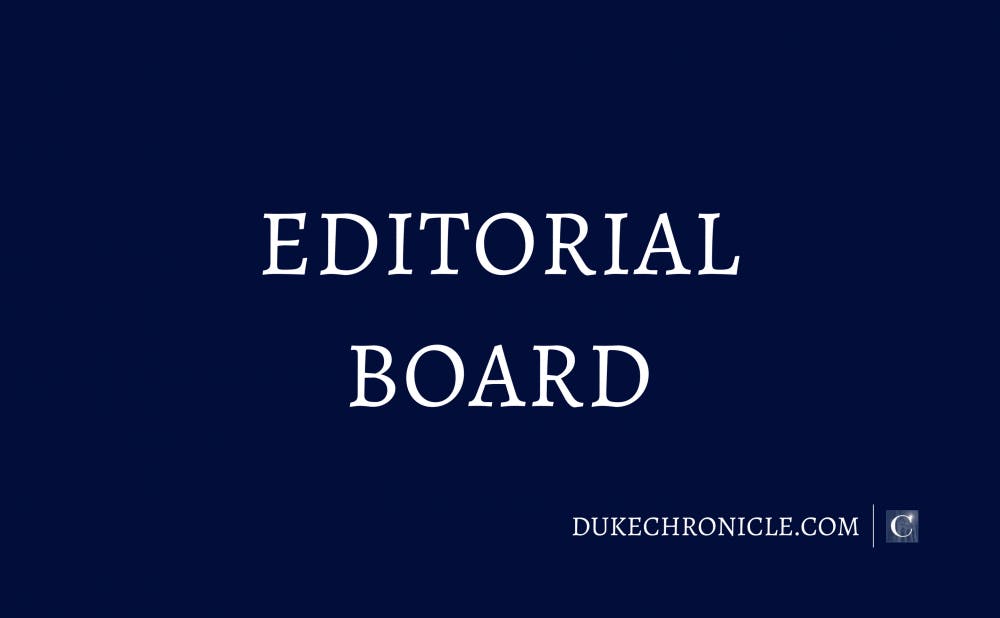As college admissions season draws to a close, with pomp and circumstance, Duke announced last week that the regular decision acceptance rate for the Class of 2023 had dropped to a mere 5.7 percent. This is a record low, dropping just under a percentage from last year’s record low of 6.4 percent. Members of next year’s incoming first-year class undoubtedly had to stand out from an incredibly competitive pool to gain admission and should be proud for having done so. But, beyond this astronomically low statistic, what does it really mean for Duke’s acceptance rate to have plummeted to 7 percent?
A 0.7 percent decrease may seem slight to some, but this decrease represents an ongoing trend in college admissions. Duke’s acceptance rate in 2009 was 17 percent, which at the time was touted as “the lowest in Duke’s history” by the perennial Dean Christoph Guttentag. In just 10 years, Duke’s already unreachable, pseudo-ivied gates have closed on a further 10 percent fewer students. This record low was especially acute in the regular decision pool, which can already feel like a self-doubt-inducing lottery in an age of sub-10 percent acceptance rates. Though Duke does publish some vague semblance of admissions guidelines, to determine whether you have met those is guesswork at best. This mystique is only furthered by the elusive gatekeepers to Duke: the admission officers. Tasked with creating the next class of smart, diverse and well-behaved Duke students, implicit biases may play a part in choosing whether to accept the straight-A lacrosse star over the Math Olympiad champion and vice versa.
The real problem with the decreasing acceptance rates is the illusion of “Duke exceptionalism” that it allows admitted students to peddle. Every year at convocation, Guttentag highlights some notable admitted Duke students who have decided to grace the Gothic Wonderland with their genius. From international chess champions to semi-professional ballet dancers, administration seeks to remind the incoming class how special and uniquely talented they are for having survived such a rigorous admissions process. In knowing that not just anyone can claim the title of Duke students, we have sufficient evidence to justify waving flags of intellectual elitism towards supposedly “lesser” schools like UNC and Wake Forest.
In reality, being admitted doesn't mean you've deftly navigated the pitfalls of applying to a prestigious university. To apply regular admission as a non-legacy student is something akin to putting one’s application into a metaphorical black box, hoping to receive a thick envelope come April. This is not, however, to say that there are not exceptional students at Duke. But it is important to acknowledge that "exceptionalism" in the context of college admissions is rarely independent of upbringing, access to resources and income. Far too often, this sense of Duke exceptionalism, being part of the mythical “7 percent” to have survived a brutal admissions process, can lead to delusions of grandeur at an elite university where students feel they are entitled to internships at Goldman Sachs and admission to Harvard Medical School.
It is not just Duke students who look to falling acceptance rates in approval. As an institution, it seems that Duke’s pride in is its rising exclusivity is emblematic of its continuous attempts to compete with our older, ivied peers up north. Having already surpassed a number of elite schools in selectivity, the "Southern Ivy" continually clamors to prove that it is just as prestigious as its peer institutions. How often did you hear, “I’m only here because I got waitlisted from Princeton” or “I didn’t get into Yale” during obligatory Orientation Week introductions? Melissa Harris-Perry, the orientation week speaker for the Class of 2019, even jokingly inquired to a fledgling first-year class if anyone in the audience was at Duke because they were unable to get into Harvard. Self-deprecation aside, it seems that acceptance rates among elite universities have come to represent a numerical hat contest, with a 4 percent acceptance rate somehow more more impressive than a generous 7 percent.
What is the real difference between the class of 2019 and 2023? For the senior class who arrived on campus four years ago, the acceptance rate was 11.4 percent. Now that the number has dropped four percentage points, is there any less dramatic difference between the quality of Duke students who rave at Devines or decide to STINF their Friday morning 8:30? Probably not.
This was written by The Chronicle’s Editorial Board, which is made up of student members from across the University and is independent of the editorial staff. The editorial board did not meet quorum for this editorial.
Get The Chronicle straight to your inbox
Sign up for our weekly newsletter. Cancel at any time.

